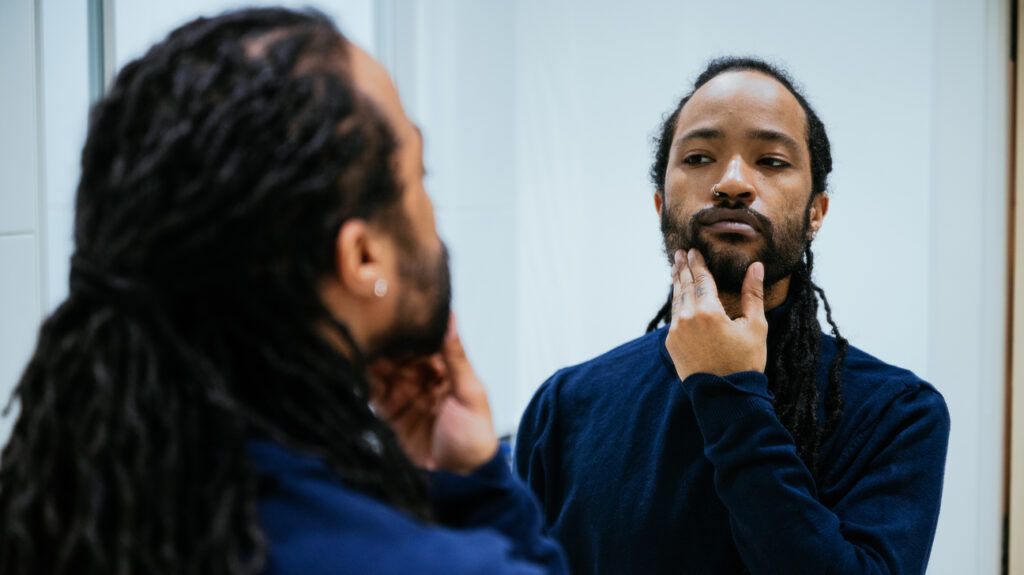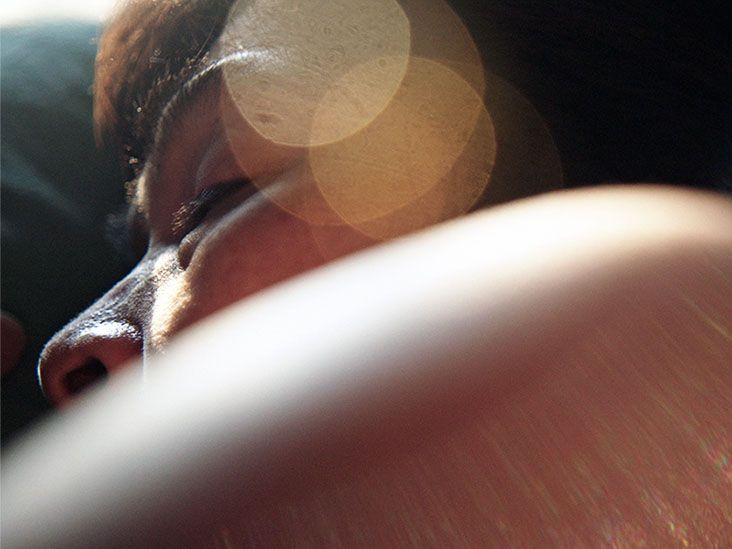Alopecia areata, ringworm, and chemotherapy are among the most common causes of a bald spot or patch in the beard. Treatment can vary depending on the underlying cause of a bald patch in the beard.
Recovery time will depend on the cause, but a person may choose to remove their beard until it regrows.
This article explores these causes in more detail, explains how to treat beard hair loss, and discusses when a person should speak with a doctor.
A note about sex and gender
Sex and gender exist on spectrums. This article will use the terms “male,” “female,” or both to refer to sex assigned at birth. Learn more.

Several factors can lead to bald spots developing in a person’s beard. Some of the most common causes include:
Alopecia areata
Alopecia areata is an autoimmune condition that causes hair loss. It is not transmissible.
Alopecia areata occurs when the body’s natural defense, the immune system, attacks the hair follicles and causes the hair to fall out.
It tends to lead to round or oval bald patches on the scalp, but it can affect any part of the body. When it involves the beard, doctors call it alopecia barbae.
Ringworm
Fungi cause ringworm, which is a common skin infection. It can affect any part of the body. When it affects the beard, it is known as tinea barbae.
Symptoms tend to develop around
- A person with ringworm: It is important for anyone with a ringworm infection not to share clothes, towels, hairbrushes, or any other personal items.
- An animal with ringworm: Animals such as cats, dogs, cows, goats, pigs, and horses can transmit ringworm to humans.
- The environment: The fungi that cause ringworm thrive in damp areas such as locker rooms and public showers.
Ringworm of the beard, or tinea barbae, is not common. It
Tinea barbae is most common in men. However, it may affect women with dark, coarse hair on their face and neck.
Chemotherapy and radiotherapy
Chemotherapy is one of the most common treatments for cancer. It frequently leads to hair loss, which doctors call chemotherapy-induced alopecia (CIA). It can affect any part of the body, including the scalp, eyebrows, eyelashes, and beard.
The extent of the hair loss depends on:
- the drug or combination of drugs that the healthcare professionals have prescribed
- the dosage
- the way the person’s body reacts to the drug or drugs
Not everyone who undergoes chemotherapy will lose their hair. Some people experience mild shedding that is hardly noticeable, while others can lose their hair or beard entirely.
Radiotherapy is another common cancer treatment that may lead to hair loss. However, in radiotherapy, the hair loss is
Therefore, people receiving radiotherapy to treat head and neck cancer may experience hair loss in their beards.
Bald patches in the beard can develop suddenly or over time and may also vary in size. The cause of hair loss in the beard may also lead to additional symptoms.
The following sections discuss some other symptoms that each condition may cause.
Alopecia areata
Some people with alopecia areata
However, research from 2019 also highlights that alopecia areata is associated with other autoimmune diseases, which can cause a range of symptoms.
Ringworm
The
- a circular rash that looks like rings
- itchy skin
- skin discoloration
- scaly or cracked skin
- hair loss
The symptoms of tinae barbae also include scaly, itchy, red, or discolored spots, which
Chemotherapy and radiotherapy
There are usually no additional symptoms of CIA. Before treatment begins, it is not possible to know whether chemotherapy or radiotherapy will cause hair loss or thinning.
A person may want to
A healthcare professional will usually be able to diagnose the cause of a bald patch in the beard with a quick examination.
The following sections will discuss the possible diagnosis process for each condition.
Alopecia areata
A doctor or dermatologist can usually diagnose alopecia barbae by
For example, they may look at the degree of hair loss and examine some samples of hair under a microscope. This will usually be quick and straightforward.
They may also perform a skin biopsy or blood test to rule out an infection or underlying medical condition, such as other autoimmune conditions.
Ringworm
A doctor
Chemotherapy and radiotherapy
Hair loss is a common side effect of chemotherapy and radiotherapy, but it does not affect everyone who undergoes these treatments.
The hair may begin to fall out
Hair typically starts to fall out around 2 to 3 weeks after starting radiation therapy.
After diagnosing the cause of a bald patch in the beard, a doctor may be able to suggest medications to help treat the hair loss.
In some cases, people may wish to try these medications or home remedies. In other situations, they may wish to prepare for hair loss by shaving their beards.
The following sections discuss the treatment options for each condition.
Alopecia areata
A doctor may prescribe corticosteroid creams to people with mild cases of alopecia.
In more severe cases, they may recommend Janus kinase (JAK) inhibitors, corticosteroid injections, or immunosuppressants.
Ringworm
People can use over-the-counter antifungal creams, powders, or ointments to treat mild to moderate cases of ringworm. Products such as clotrimazole, miconazole, and terbinafine can usually clear the infection
A doctor may prescribe a stronger antifungal medication if necessary. Such products are usually in the form of tablets. They can take around 1 to 3 months to clear the infection.
Chemotherapy and radiotherapy
Some people
There is not much evidence to support the effectiveness of home remedies to treat hair loss in the beard area. However, none of these remedies are likely to cause harm unless a person has an allergy, so they may be worth considering.
Some home remedies for hair loss include gently rubbing any of the following into the beard area:
Some people may take zinc or biotin tablets, as well as hair growth supplements. Others may turn to alternative treatments, such as acupuncture or aromatherapy. However, people should consult a doctor before trying any of these home remedy options.
Learn more about home remedies for hair growth.
The time required for the hair to recover will vary from person to person. It will also depend on the cause of the hair loss and the treatment received.
Alopecia areata
In general, people who have one or two bald patches make a full recovery. The hair tends to grow back within 1 year, even without treatment.
However, the bald patches might come back. Additionally, many people with extensive alopecia find that their hair does not grow back, even with treatment.
Ringworm
As mentioned,
Chemotherapy and radiotherapy
Usually, a person’s hair begins regrowing a few months after completing cancer treatment. When it does, the hair may be thinner and a different color and texture. However, this difference is usually temporary.
In most cases, a person’s hair will
If a person feels that the bald patch is affecting their quality of life, they may wish to consider consulting a doctor. They may be able to assess the severity of the symptoms, determine the potential cause, and suggest some appropriate treatment options.
Alopecia areata
Anyone who suspects they have alopecia areata should speak with a doctor. Several treatments are available, but they are not all effective for everyone.
Ringworm
If the infection has not resolved within
Chemotherapy and radiotherapy
In some people, chemotherapy and radiotherapy may cause
If worried, a person can speak with their doctor about how to manage hair loss during and after chemotherapy or radiation therapy.
Several conditions can cause bald patches in the beard. These include alopecia areata, ringworm infections, and chemotherapy treatment.
In most cases, beard hair loss is not permanent. Most people with alopecia areata will make a full recovery, though the hair loss may come back with time.
A ringworm infection is treatable using over-the-counter products, though a person may need to consult a doctor if it does not clear within a few weeks.
CIA is usually temporary. The hair tends to grow back after chemotherapy or radiation therapy has finished, though it might differ in color and texture for up to 1 year.


